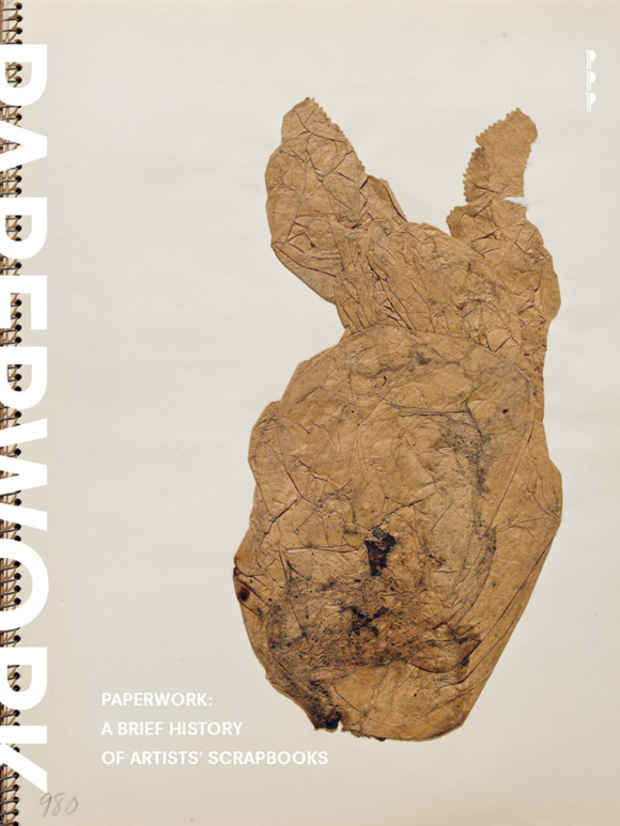"Paperwork: A Brief History of Artist's Scrapbooks" Exhibition
Andrew Roth

This event has ended.
The scrapbook has long been used as a store- house for memories—to preserve a lock of hair, a sentimental piece of correspondence, a magazine clipping, or a beloved snapshot. Finding a historical precedent in the seventeenth-century commonplace book, in which bits of scripture might be jotted down alongside literary quotations and recipes, the scrap- book evolved into a highly crafted visual record, a diary not just of thoughts, but also of things. Artists began to engage with the scrapbook in earnest in the postwar period, using the page as variously as the canvas, albeit on a smaller scale. As the title “Paperwork” suggests, this exhibition explores how contemporary artists have used the scrapbook to forge an intimate artistic identity, in opposition to the bureaucratic, administrative papers that provide official identification.
If the conventional scrapbook originally was a place to store memories, the artist’s scrapbook often trades in nascent ideas, both visual and textual, which may or may not grow into a more finished work. Such books allow an informal view into the process of thinking that goes before making; the collecting that comes before facture. William S. Burroughs and Brion Gysin (whose three exceptional scrapbooks form the backbone of this exhibition) used oversize books to intertwine visual ideas and threads of stories: news clippings and shards of advertisements woven among watercolor paintings and excerpts from manuscripts—arrangements which fed into Burroughs’s dreams and back out into his cut-up narratives. Other artists, such as Al Hansen, carried small notebooks for organizational jottings, quick sketches, and humorous musings, making col- lages on the fly and tucking away daily detritus for safekeeping. Richard Prince collected tear sheets from magazines in plastic portfolios, archiving his images of biker chicks and catalog models for later use. Carolee Schneemann kept long-running scrapbooks, documenting both her domestic life and her burgeoning artistic career.
But the scrapbook can also be a finished work itself, in which the tightly conceived and carefully constructed sheets form a complete whole. Isa Genzken’s I Love New York, Crazy City is one such example: made during a year she spent in New York in the mid-1990s, the book is a madcap conglomeration of color snapshots, faxes, and letters affixed to the pages with electrical tape. The French artist Jean-Michel Wicker makes byzantine scrapbooks, often excising pages from store-bought notebooks at the gutter and taping in replacement patchworks of found images, Internet printouts, and hand-lettered phrases. A classic scrapbook purportedly made by Ray Johnson when he was a teenager features kitsch images of babies, puppies, and western landscapes; it was later repurposed in an edition by Brian Buczak, who xeroxed particular spreads, creating degener- ated Pop facsimiles.
Recognizing the limitations of book exhibitions, in which viewers are typically unable to peruse pages freely, Karin Schneider and Louise Ward have produced Scraphagia, a four-hour-long HD video that records nearly every spread from the scrapbooks exhibited, showing the pages in motion: a disembodied hand leafs through the books, acting as a proxy for the viewer. To coincide with the exhibition, PPP Editions has published Paperwork: A Brief History of Artists’ Scrapbooks, reproducing (to scale) spreads selected from the books on view, along with accompanying essays by Kitnick and Richard Hawkins.
Also on view is a film by Karin Schneider and Louise Ward, commissioned for the occasion of the exhibition.
Media
Schedule
from February 15, 2013 to March 29, 2013
Opening Reception on 2013-02-14 from 16:00 to 18:00
Artist(s)
Monika Baer, Brigid Berlin, Joe Brainard, William S. Burroughs & Brion, Al Hansen, Richard Hawkins, Geoffrey Hendricks, Ray Johnson & Brian Buczak, Leigh Ledare, Robert Mapplethorpe, Aleksandra Mir, Claude Pélieu, Richard Prince, Gerhard Richter, Carolee Schneemann, Jean-Michel Wicker Gysin, Jimmy De Sana, John Evans, Hans-Peter Feldmann, Isa Genzken